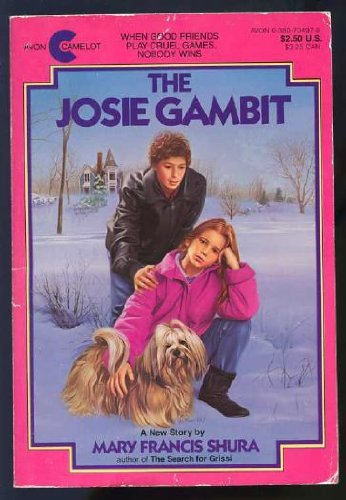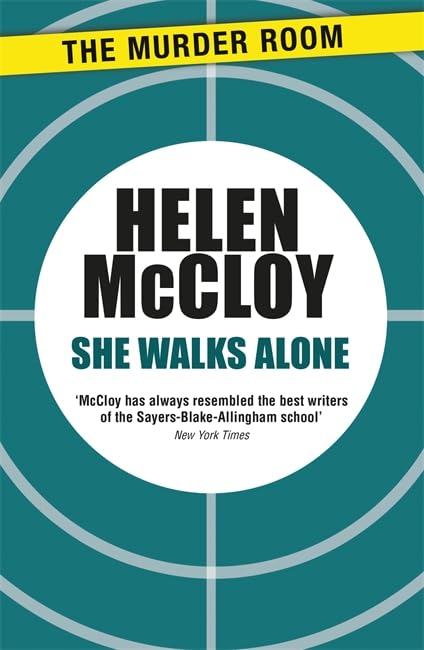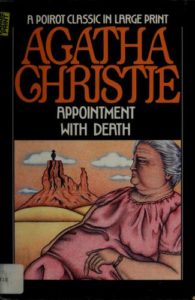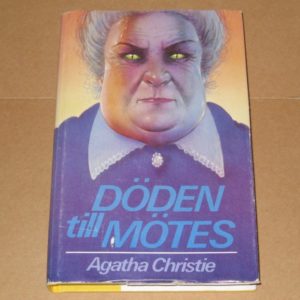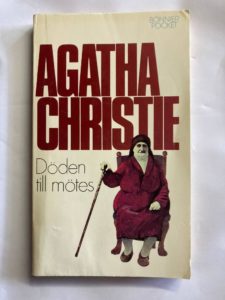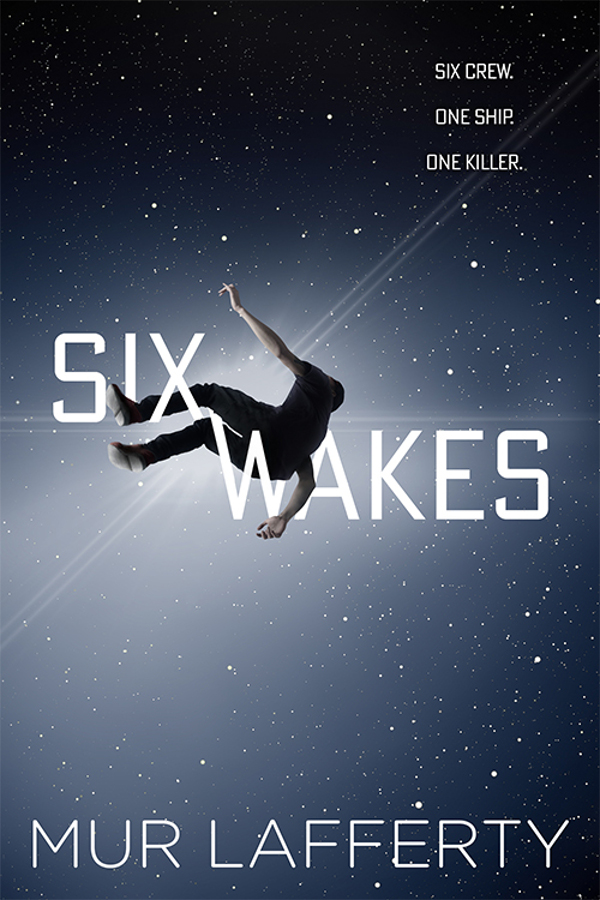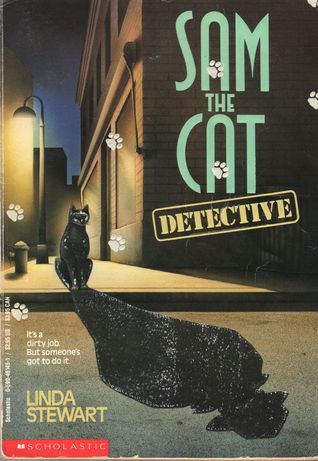During peak corona days, I wandered down to an unofficial little free library someone had posted about in the neighborhood Facebook group to see what I could find. Mord ombord was one of the titles I brought back (on the basis that the title sounded like a fun murder mystery) but then I put off reading it for three years.
Now here we are!
This was the first I’d heard of American mystery writer Helen McCloy, despite several books and honors to her name. She was the first woman president of Mystery Writers and later awarded the title Grand Master by the same organization, in addition to an Edgar award for her literary criticism. Born in 1904, her mystery writing career began with the publication of Dance of Death in 1933 (or possibly 1938? I have conflicting data) and continued until her last novel, The Smoking Mirror, in 1979. She died in 1992, so I can only assume that she spent the 80s in comfortable retirement.
Mord ombord (previously published as Någon ämnar mörda mig) is the Swedish edition of McCloy’s 1947 She Walks Alone, and I have to admit that the English title isn’t nearly as punchy as the Swedish ones. I can only assume it’s a reference to this line from the book:
“Tony, did you ever hear of the Emperor Yao?”
“What on earth…?”
“He ruled China in its Golden Age. There is a saying about the peacefulness of his reign. ‘In the days of the Emperor Yao, a virgin with a bag of gold could walk alone from one end of the Empire to the other without fear of being molested.’ Since then, times have changed.”
The murders in question unfold on a ship from a fictional Caribbean country en route to New York. One of the passengers has been killed by a bite from the bushmaster snake under transport before the first port of call, where the ship’s captain brings the matter to the book’s detective, police captain Miguel Urizar. After a brief investigation, the coroner urges Urizar to declare the death an accident, but on a hunch Urizar decides to board the ship for the rest of its journey under the pretext of taking a vacation. This section closes with another death, after which the book skips ahead to give an account of some of the passengers’ whereabouts after docking in New York.
At stake in all of this is a package of $100,000 that everyone on board has reason to want to steal. But who’s willing to murder for it?
She Walks Alone has a somewhat unusual structure. It opens with a substantial first-person perspective, in the form of a letter “meant to be read in the case of my violent death.” This is the letter presented to Ulizar by the ship’s captain in the second section of the book and prompts his investigation into the matter. We follow Ulizar until the second death, at which point the narrative switches to a second letter, and then it ends in another third-person perspective for the parlor scene, which is satisfyingly enough set in an actual parlor.
These changes in perspective not only ratchet up the tension (McCloy knows how to write a cliffhanger!) but also contribute to the mystery itself. I don’t think it’s too much of a spoiler to say that the shifting boundaries of what is knowable to the reader at any point in time play a decisive role in the mystery. It’s all very natural, however, and doesn’t feel particularly gimmicky.
She Walks Alone is still in print and readily available, one edition in 2014 from the now-defunct imprint Murder Room and another from Agora Books as part of their 2020 “Uncrowned Queens of Crime” series. In their own words:
While Agatha Christie, Dorothy L Sayers, Margery Allingham, and Ngaio Marsh have held their own against the men of the Golden Age of Detective Fiction in both sales and acclaim, most average readers rarely venture beyond the four queens. If classic crime ‘best of’ lists are packed full with a variety of men, it shouldn’t be so challenging to find more than just a handful of brilliant crime-writing women.
Agora believes there are female authors from this era whose heads still sit uncrowned. From discussions with the readers of its Crime Classics community to scouring historical libraries and coastal secondhand bookshops, the publisher has uncovered a few women worthy of the title.
But my copy wasn’t one of the new paperbacks; it was a Swedish hardcover edition from 1954 put out by Tidens bokklubb, translated by Erik Wilhelm Olson, about whom there is little to say. He was a literature and film critic for Svenska dagbladet, wrote several novels (I think novels?) and short story collections, wrote and directed a short film in the 1920s, and translated crime fiction into Swedish. His biography on Runeberg.org includes his portrait, so here you go:
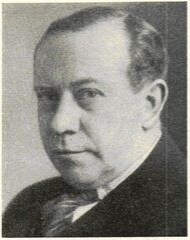
Based on the language of the translation and the publication date, I would note some of-the-time racial terminology (which is, if memory serves, almost exclusively in the first-person perspectives and comes across as characterization more than anything else). But McCloy also clearly has some nuanced understanding of “the race issue” (as I assume she phrases it in English, based on the Swedish) in the US and presents the matter and her characters of color sympathetically. It’s hard to comment on the quality of the translation without having read the original, but I can at least say that I enjoyed it. As a writer and critic, it’s natural to assume that Olson had a good sense for what works.
I’ve deliberately avoided going into too much detail here because I think this is a fun, clever mystery and I’d rather prompt someone to pick it up and read it for themselves than pick it apart here and ruin the mystery. The clues are subtle, but they’re all there: this is a whodunit in the “the reader has all the tools to figure it out themselves” tradition. And while yes, Raymond Chandler, “the ideal mystery was one you would read if the end was missing,” there’s always an element of fun that’s ruined in a mystery when someone’s spoiled the ending for you—no matter how good everything around the mystery is.

